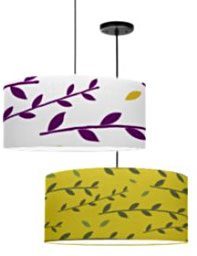
Remember the days when you needed an interior designer by your side if you wanted to get custom furnishings? In the not-so-distant past, the domed halls and hushed voices of designer showrooms were the holy grail of the interior design world, places homeowners were allowed to enter only if they were accompanied by their designers. We, the designers, made it all come together like a symphony orchestra. We chose the furniture frames, fabrics, and lighting. We developed the space plan and made sure the furniture fit — and complemented the other pieces. We checked that fabric arrived on time, was from the right dye lot, was the correct yardage and that it got to the upholsterer or seamstress. Et Voila! Homeowners watched as beautiful, cohesive rooms arrived at their doorsteps and were installed in the time frames promised.
It was, and still is, a complex process and one that remains at the core of many interior design businesses today. But the closed doors of designer showrooms were opened in the 90s and the popularity of the Internet has given consumers, our design clients, even more access and opportunities to create their own interior spaces. Today your home can feature custom furnishings, prints and designs created entirely by you if you trust your own design sense, that is.
Over the next two months, we’ll look at several key design elements that you can now create on your own. When considering these separate pieces of the design puzzle, don’t forget the big picture look you want to achieve. You want your choices to complement each other without coming off as too matchy-matchy. It is a fine line, but let’s take a look at some of your options:
Lighting
Lighting is an essential part of the interior design scheme, but something that is often overlooked or considered as an afterthought even by professional designers. I believe that a minimum of three lighting sources at different levels is essential for good design — and one of those levels includes lamps.
Lamp shades do not have to be confined to solid muted colors of bland beiges, subdued browns or pale greens in paper or silk. Lamp shade materials now include cotton prints in bold colors, thin wood veneers and papers with punched out designs. Even the coarse linens that were popular in the 60s are back. The resources for lamps on the web are enormous and I find new lighting sources daily.
Modern technology has made the printing process easier, and Alluminaire is just one of many companies that enable you to create your own designs. The company is young, imaginative and offers a product that is easy to construct. They have a large library of lampshades, fabrics and wallpaper from which to choose. Follow their easy-to-use step-by-step process to select a basic print, its size, and the color combination you want.
For aspiring young designers, Lamp- in-a-Box is fun and easy and lets juniors take part in the room design experience.
For a more traditional fit, try the Lampshade Shop for simple steps on how to choose your shade size, shape and fabrics, including papers, hides or grasses. The website is not as user friendly as some of the more modern sites and you will not see your shade as you build it, but they have plenty of photographs to document what you are getting.
In our next issue, we’ll look at ways in which you can customize the design of your window treatments, bedding and even furniture. Stay tuned.
